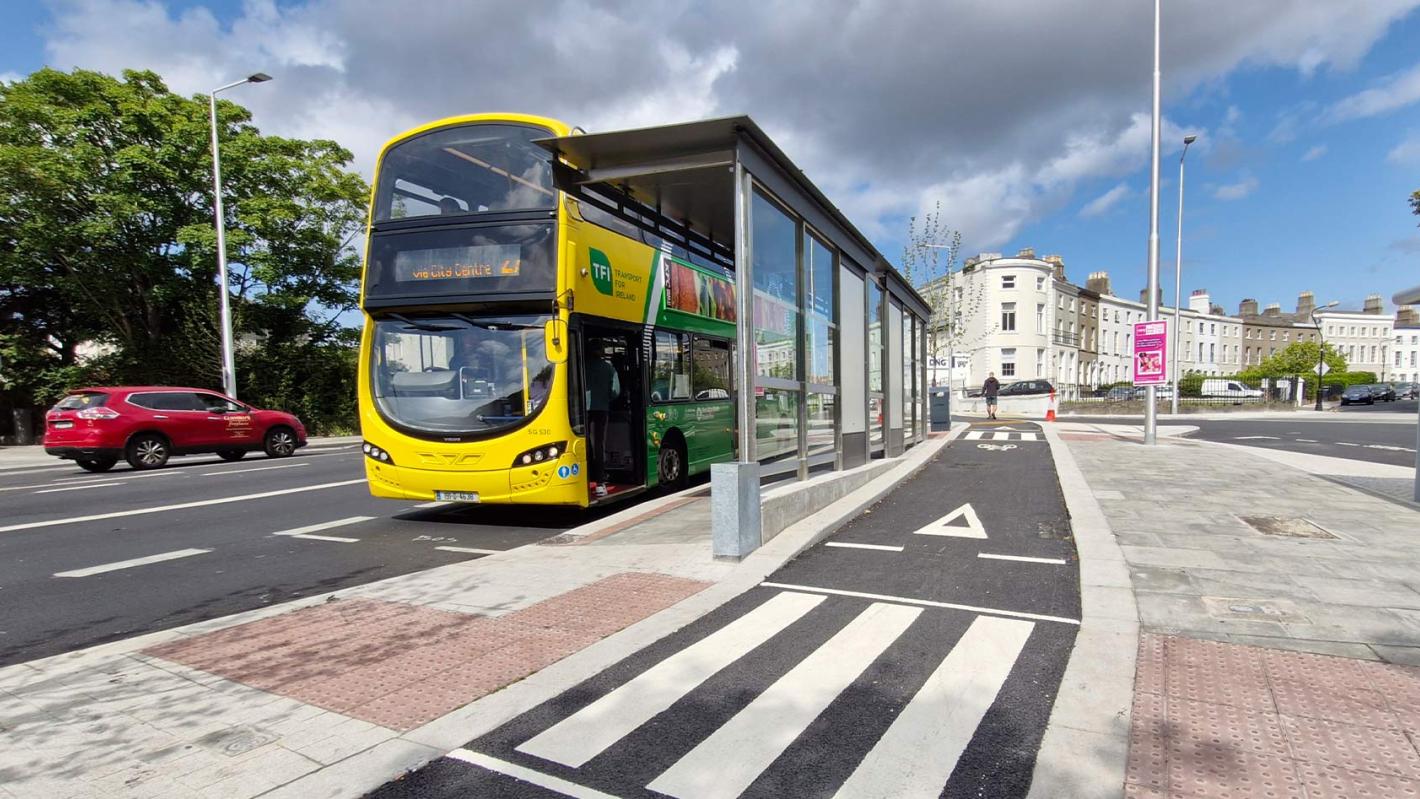
The Clontarf to City Centre Project. Image courtesy of Dublin City Council.
Providing segregated cycling facilities and bus priority infrastructure in Dublin’s North East Inner City.

The Clontarf to City Centre Project is a transformative project for Dublin’s North East Inner City (NEIC). The €71 million scheme provides high quality walking, cycling and bus infrastructure along a 2.7km route that extends from Clontarf Road, at the junction with Alfie Byrne Road, to Amiens Street, at the junction with Talbot Street. The project was led by Dublin City Council and funded by the National Transport Authority.
ROD worked continuously on the project from 2017, finalising the preliminary design, preparing the detailed design and contract documents, supervising and administering the construction contract, and providing general support to the council. The main contractor was Clonmel Enterprises Ltd, with CSR Land Planning and Design serving as landscape architect and Kevin Cleary as public lighting designer.
The project was officially opened on 28 November 2024 following a 30-month construction stage.
The main challenge for the design team lay in balancing the needs of the road corridor with those of the local community. By working closely with Dublin City Council and CSR Landscape Architects, we achieved a scheme that re-establishes the connection between the Fairview/Marino residents and their park to the east while addressing the planning conditions for segregation between road users.
